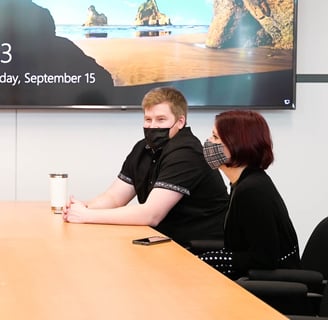Haze and Glare in Professional Displays
Explaining the concepts of haze and glare for professional display screens.
Bob van Holland
9/27/20231 min read
Matte Displays
The connection between your eyes and the screen happens through the display's surface. Today's display technology offers various treatments for this surface, resulting in different levels of shininess. A matte display surface is one that has been treated with mechanical or chemical processes, creating a coarser texture. This treatment is often referred to as a matte or anti-glare finish.
But what exactly is "haze"? Think of it as a measure of how scattered light behaves when it hits the screen compared to light that bounces straight back at you. Higher haze levels mean the surface is rougher, causing more scattering and less reflection. Currently, the maximum achievable haze level is 44%. Elevated haze levels are particularly helpful in spaces with strong direct or ambient light. They enhance image visibility and reduce the potential for eyestrain, as you don't have to squint through intense glare or reflections to see what's on the screen. Another perk is that dust, grease, and dirt are less noticeable on these surfaces.
A matte finish on the screen surface is designed to disperse ambient light, preventing it from reflecting directly back at the viewer. This is especially crucial in well-lit environments because reflections on glossy or low-brightness surfaces can overshadow the screen's content, making it difficult to read.
However, it's important to note that a highly matte surface does slightly reduce the display's brightness and color vibrancy. Therefore, it's essential to ensure the screen is sufficiently bright to compensate for this. You won't find matte screens in the lower-tier professional displays because they lack the necessary brightness.
Glare
Glare refers to intensely bright areas in an image caused by either the image content itself or reflections of ambient light on the screen's surface. Glare and reflections can significantly detract from the viewing experience. These reflections can appear across the screen, regardless of the content, often overshadowing darker areas and resulting in a loss of visual information and contrast. When glare affects the darkest areas of the screen, it elevates the perceived black level, reducing contrast and readability. Glossy surfaces worsen this problem by reflecting more light as the viewing angle changes. This limitation makes glossy displays less versatile when it comes to various viewing angles compared to displays equipped with anti-glare coatings.




